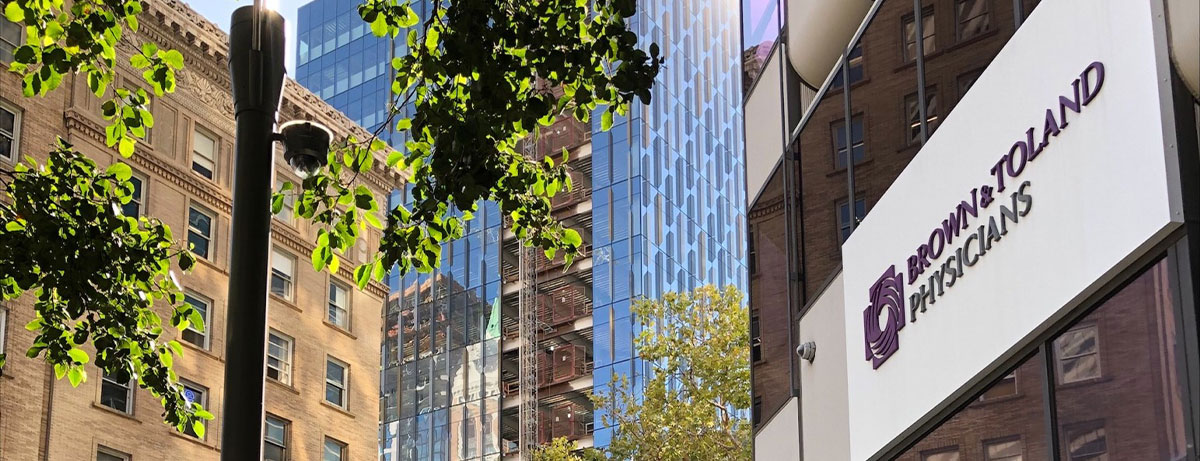Exercising Precaution

Baby boomers should work out to boost their health—and take steps to avoid injury
If you’re a baby boomer, be proud that your generation is fitter than folks your age have ever been and can reap the many benefits of exercise—healthier hearts, stronger bones, reduced risk for diabetes and certain cancers, a boost in mental outlook, and more. The trouble is, today’s seniors and late middle-agers are also more prone to exercise-related injuries, which orthopedic surgeons have aptly dubbed “boomeritis.”
Anatomy of Aging Athletes
Boomers may not want to admit it, but certain effects of aging may be at play in their athletic mishaps. “There is a natural loss in tissue elasticity as we get older,” says Gary Fanton, M.D., clinical professor of orthopedic surgery at Stanford and a San Francisco 49ers team physician. “In addition, joint cartilage tends to wear down over time. On a molecular level, we’re always breaking down and building tissue. As we get older, that repair cycle is longer.”
Exactly what sorts of injuries are most common among aging athletes? Overuse injuries are the most common by far, especially chronic inflammation of the tendons, or tendonitis. Shoulder rotator cuff tendonitis is the leading complaint, says Rowan Paul, M.D., a Brown & Toland sports medicine physician at California Pacific Medical Center and a physician for the San Francisco Ballet. “Over many years, the rotator cuff gets worn out and is at risk for total or partial tearing,” Dr. Paul explains. “I tell my patients that it’s similar to wearing jeans for a long time—the seat starts to wear out and get frayed a bit, the more it gets used.”
7 Steps for Smart—and Safe—Workouts
Want to minimize overuse and other injuries and maximize the benefits of working out? Here’s how:
1. See your healthcare provider to get thumbs-up on physical activity. “That’s step one,” says Dr. Fanton. “Anyone age 40, 45 and up who’s starting a new exercise program should do it with their overall health in mind. People over age 50 really need to be checked for cardiovascular fitness and risk of stress fractures due to a lack of bone density.”
2. Don’t be a weekend warrior—work out consistently, and set realistic goals. “Aim to exercise most days of the week, spending 30 to 45 minutes with each workout,” says Dr. Paul. Choose activities that you like and that fit your fitness profile, but still take it slow, gradually increasing your workouts’ intensity, says Dr. Fanton. Use the 10 percent rule as a guide: Don’t increase your program—walking or running distance, amount of weight lifted, duration of exercise—by more than 10 percent a week.
3. Warm up before exercise and cool down afterward. A caveat about stretching: “It’s clear that stretching after workouts helps prevent injuries, but there is some controversy about whether stretching before exercise prevents injury,” says Dr. Paul. “A lot of experts think that a 10- or 15-minute, low-intensity warm-up lengthens and warms up muscles more effectively than a ‘cold’ stretching routine.”
4. Focus on proper technique and equipment. Rather than striking out on your own when undertaking a new physical activity, advises Dr. Fanton, consider formal lessons with a personal trainer or professional in the field.
5. Vary your workouts. “There should be lighter workout days and days that are strenuous, and it’s also good to cross-train,” says Dr. Fanton. “If you run, for example, you might lift weights, cycle or swim on alternate days so you’re constantly rotating the impact on muscle groups and joints.” At least twice a week, do exercise that bolsters your sense of balance, an ability we lose as we age, unless we train it, says Dr. Paul. An option: Balance on one foot for 45 seconds or a minute; make it more challenging while you’re at it by bouncing and catching a tennis or medicine ball off the wall.
6. Eat a balanced diet. Emphasize good nutrition, especially right after workouts, to protect your health and build stamina. Check with your doctor about the benefits of vitamins and supplements, advise Drs. Fanton and Paul. “It depends on your body and your family history,” says Dr. Paul. “If you have a family history of heart disease, it makes sense to ask your doctor about supplements that have omega-3s or fish oils. If someone has a family history of osteoporosis or fractures, or is female, I’m very rigorous about recommending calcium and vitamin D as well. In general, though, it’s a good idea for baby boomers to take a multivitamin every day—unless they have extremely well-balanced diets, which most people in this country don’t have.”
As for glucosamine and chondroitin, which are over-the-counter supplements, “there’s no well-controlled scientific proof that they’re effective in decreasing arthritis or improving joint health,” says Dr. Fanton. “There’s also very little that indicates they do harm, so I leave it to the patient’s desires and wishes.”
7. Listen to your body. “If you’re doing something that results in pain in the same place for more than five to seven days, it’s critically important to slow down—if not take a break—and go see a primary care or sports medicine physician,” says Dr. Paul. “It could be a sign of true injury that needs to be addressed promptly.”
